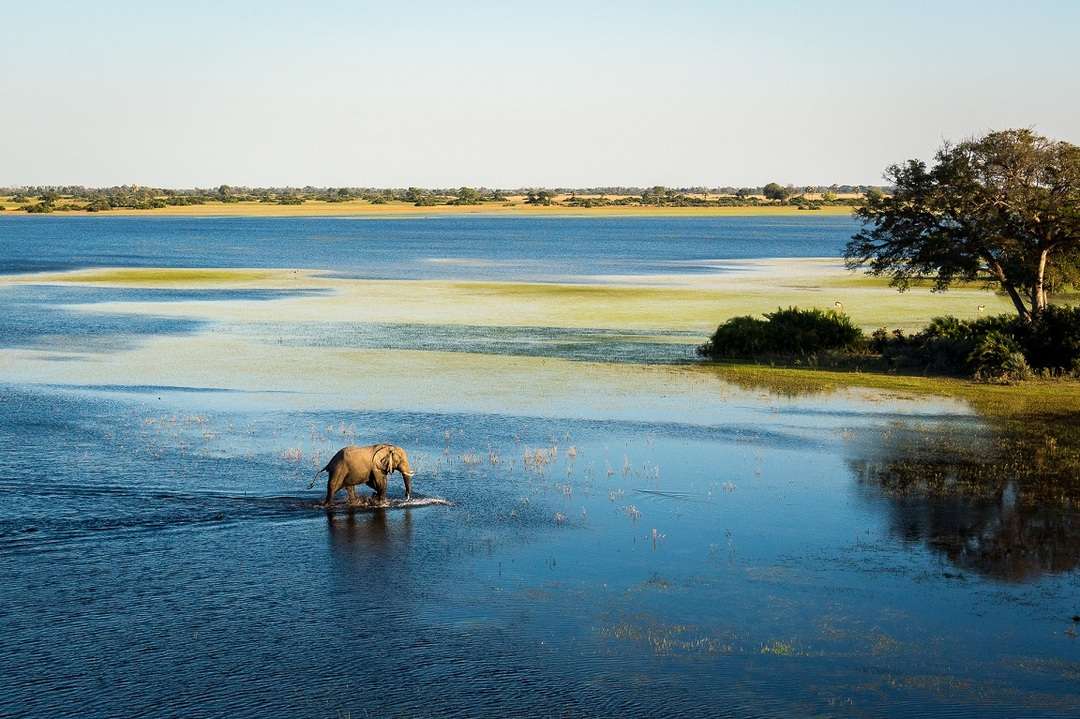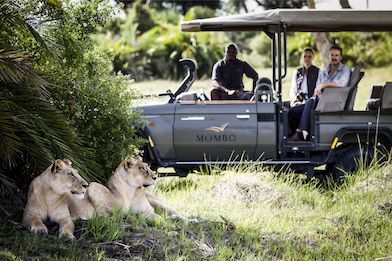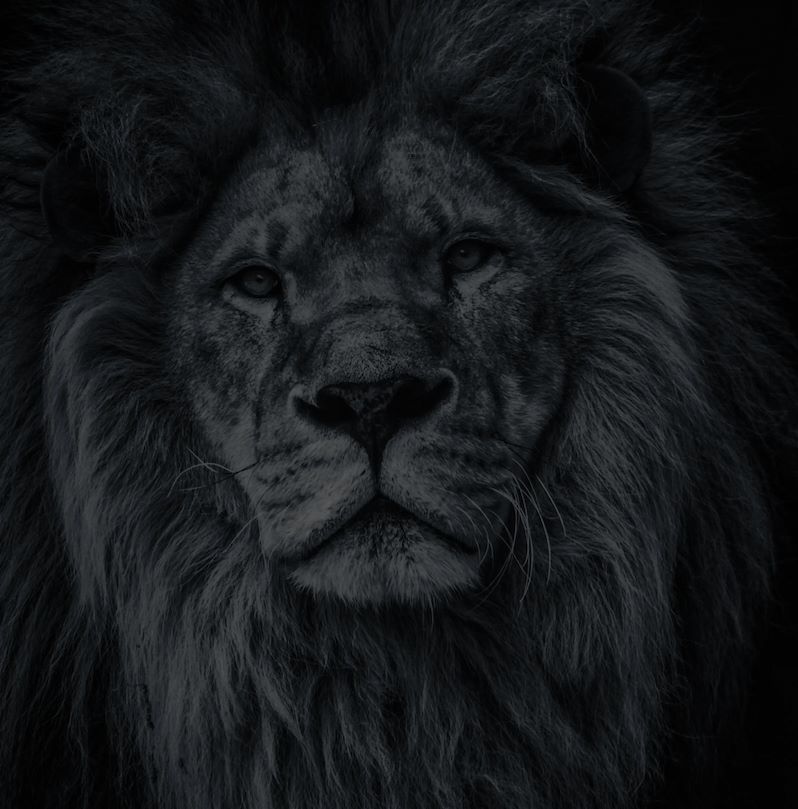Game viewing and birding at Jao Camp – in the heart of the unique, magical Okavango Delta – offer a diverse abundance of wildlife, and some very special sightings. Set in the 60 000-hectare Jao Reserve in the Delta’s north-west, the famed Moremi Game Reserve bordering on the east, Jao’s landscape changes with the seasons and the terrain, ranging from floodplains to permanent swamps to drier mopane areas to various islands – paradise for the local creatures.

Endless herds of red lechwe with lion or leopard in pursuit, armies of elephant, of buffalo. Many other antelope, including impala; blue wildebeest; tsessebe; and rare sitatunga. If you’re lucky, wild dogs. A wealth of other plains game, and plenty of hippo and crocs in the water and on its banks. A birder’s delight, with prospects of Pel’s fishing-owl; wattled crane; slaty egret, and hundreds of other species.

Whether you’re walking, driving, or lying back in a mokoro, the iconic dugout canoe of the Delta, miraculous wildlife encounters await you at Jao.
Jao co-owner Cathy Kays; son Martin, director of Ngamiland Adventure Safaris; Jao Camp Manager Kgosi Sethoko; Jao Reserve Food Experience Manager Cindy Swart; and Jao Guide Meshack Mbwe share some of their most memorable wildlife and birding experiences. Sometimes the ones that mean the most are shared with others – children, especially, through Jao’s participation in the Children in the Wilderness programme, which educates youth from local communities on wildlife and conservation. As Cindy notes at the end, seeing a child meet a wild creature in the bush for the first time is unforgettable.

BEASTS
(Meshack) The Jao experience is unique in the sense that it has more to offer in terms of wildlife than many camps, as it has several ecosystems. This habitat diversity influences different wildlife experiences. In the Jao Concession, you learn that animal behaviour doesn’t always go by the book. For instance, the lions at Jao can live more independently, and can successfully raise a litter by hunting without the help of the rest of the pride.

One of my favourite wildlife memories was when I was on a walk with a guest who wanted to see elephants. Within ten minutes, we ran into a bull in musth, a periodic surge in a male elephant’s testosterone, and often aggression, and he immediately started charging. I told the guest to stand his ground, which he did for a while until the bull got close and we were forced to hide behind an anthill as the elephant fell back. When I asked the guest if he wanted to continue and see more elephants, he quickly said no – and that is the story of my shortest walk ever.
(Cathy) My favourite Jao creatures are the banded mongooses – or as we like to call them, the ‘Jao Mongoose Mafia’. They have made Jao Island their home for at least 18 years now. They live all over the island, changing their burrows frequently to avoid any flea infestations, so sometimes they are more active around the workshop area, sometimes the office and kitchen area, sometimes in old anthills close to Villa 2, and sometimes in the main area, especially under the arrival deck. They seem to love human contact and are known to make use of a walking human to get cover from birds of prey when moving from one part of the island to another – making one feel like the Pied Piper of Hamlyn.

My other favourite animals are elephants. I love sitting quietly in silent communion with them. They are highly intelligent creatures and bring tremendous peace and strength. Living in a camp environment means that sometimes you can have an unintentionally close encounter with an elephant. If I feel nervous, then I talk softly and calmly and that has always helped both me and the elephants calm down. They are fascinating animals with their matriarch- led herds and lone bulls. Special encounters have been of bull elephants who have chosen the office area for a snooze, lying down there for a couple of hours and allowing us intimate experiences from the safety of the office. Such a privilege.

I have had many incredible and sometimes nerve-wracking experiences with wild animals over the years, where it has been imperative that I remain calm and steadfast. Like setting up a bush dinner with the vehicle parked out of sight behind an island and having a pride of lions come walking past, mere metres away and stopping to stare. Or walking into a leopard in the dark. Or when the inundation arrives, the amazing views of large crocodiles swimming in the crystal-clear channels under our boat, or even next to our vehicles as we drive through the water.

(Cindy) With the Jao Reserve covering so many different environs, I am lucky to have had a vast number of different wildlife experiences on the concession. From the weirdness of an army of caterpillars appearing on the sycamore fig trees at night and every morning disappearing into the trees’ cracks and crevasses, to the elephants that sleep lying down.
One of my very first experiences with Jao’s wildlife was many years ago. The mongooses of Jao would often terrorise me around the kitchen area in the early evenings. One time I was sitting in the kitchen office doing my paperwork, and I heard the telltale squeak and mumble of the mongooses coming through to the kitchen. The next thing I knew, I had the entire mob in the kitchen and while some distracted me near my desk, others raided the rubbish bins. I grabbed a grass broom and tried to chase them out; they didn’t like the sound of the sweeping. I then got them all out, one by one, and as I was brushing the last one out the door, I looked up into what took a few seconds to realise was an elephant knee – and there in between the four elephant knees were all the mongooses. I swear that they were all laughing at me.

One of my other favourite stories is about the evening that I locked up camp, and while walking home came across a rather large, grey animal who took particular umbrage at the fact that I was walking where he had been eating. I took refuge in a tree skeleton, and there with the encouragement of the hippo, I spent what felt like hours halfway up a tree watching the stars!
(Martin) The banded mongoose family is definitely a highlight, as they provide hours of entertainment to anyone who follows them through their daily habits. They choose different parts of the camp to sleep at night, from abandoned termite mounds to under the walkway. One evening whilst we were having dinner in the Jao boma, the troop ran in, hoping to sleep under the dinner table. But they turned around fast when they realised we were all seated at the table. This was odd as they had come into the boma quite late in the evening, seeming unsettled. But in the early hours of that morning a huge storm came through camp, and it all made sense.

At night the resident hippos visit the Jao Island to graze, and every so often lion and leopard cross over Jao Bridge onto the island. Hyaenas are also often seen and heard on the island, and sometimes rest during the day by the Jao spa. We always know when there are young hyaenas around as they take to chewing up items in camp.
One morning while we were staying in a Jao room, my wife went to the ‘loo with a view’ and called out to me, saying ‘I think there’s a lion outside our room!’ In disbelief I went to the front door and opened it, only to find the rest of the pride resting there. We had been asleep and oblivious to the lions also getting some rest. Fortunately, we were safe on the elevated walkways.

(Kgosi) It is always an adventure when leaving the office late at night. With your torch out trying to figure out what is out there, when you hear rustling in the bushes, the thrill is exhilarating. Though I have had way too many close calls to take it lightly.
I remember one humid afternoon, hot and walking to my room for a nap, I turned a corner and there was a hyaena sleeping right on my path. I stopped and did what most people say not to do – I took my phone out to record the scenario. As soon as I started recording the hyaena, it woke up startled and looked at me. We both just stood there for a bit, looking at each other confused and both contemplating our next move. As soon as I took a step back, the hyaena got up and bolted in the other direction, as I did, both running away from each other. I was terrified but ending up laughing so hard.

Another of my most memorable encounters was when I was still new to the concession. A few years ago, I was closing up the smaller camp after hosting and I was walking home, having a chat with myself for some reason! It suddenly got too quiet for my liking, but rather than take it as a sign, I continued to my tent. Just as I was about to get in, I decided to shine my torch towards the tree right in front of my verandah. I could not believe my eyes! There in front of me, not more than three metres away, was a leopard sitting, as if I was invading its home, which I probably was. My first reaction was to freeze and try not to panic. I decided, since I was not too far from the walkway, to go to main camp, where I could hear people still chatting. People were shocked to hear about my encounter, and luckily soon I managed to get a lift back to my tent – where the leopard still was, in the tree. As the car got closer, it decided to get up and leave, and I finally managed to get some sleep.

BIRDS
(Martin) To start off with, the Pel’s fishing-owl is probably the most key bird species from an avid birder’s perspective. Many birders can go far and wide in search of the Pel’s fishing-owl and never see one. The owls specialise in hunting fish at night, and roost in the riverine forests, like the one on Jao Island, during the day. Other key species would be the wattled crane, slaty egret, and ground hornbill, which are birds of concern. Their numbers are dropping in the wild due to loss of habitat; the Jao Reserve and Okavango Delta as a whole are an important habitat for these species. Other exciting species to look out for are the saddle-billed storks, lilac-breasted rollers, malachite kingfishers, and little bee-eaters. These birds all stand out for their beautiful colours. Lastly, the African fish-eagle is also a special bird to see, especially when they swoop down to catch fish near the surface of the water.

(Cindy) Because we are on the flight path of many migrating birds, we often get to see birds not usually in the area for long, stopping over to refuel on their path further up into Africa. My favourite bird is a pelican, and I have been known to run shouting around camp when the first flocks are seen coming into the area. These weird and wonderful creatures come into the concession as the water is dropping and the fishing is easy. There is usually a huge conglomeration of many different bird species that come together to make the most of this time.
The owls on the concession are something special, as we have so many different resident species. From the Verreaux’s eagle-owl to the tiny pearl-spotted owlet. Once I became quiet well-acquainted with a Pel’s fishing-owl that used to hang out on a perch above my room. In the evenings when I was going home, I would greet him good night, and in return I would get a little head bob and a two-step from him. I hold onto the belief that he recognised me after having watched him fledge the year before.

(Cathy) We often have Pel’s fishing-owls on the island; they love the thick mangosteen tree canopy around the guest rooms. Fish-eagles are iconic water birds, and their beautiful call is frequently heard. Wattled cranes are plentiful in the area and ground hornbills are locally resident. On the smaller side you can expect to see African jacanas in the water, and black crakes, slaty egrets, and rosy- throated longclaws on the floodplains. Collared pratincoles intrigue me and are often found in large flocks there.

SHARED ENCOUNTERS / CHILDREN IN THE WILDERNESS
(Meshack) Jao is part of the Children in the Wilderness (CITW) programme, so by taking children from surrounding communities and teaching them about animals and nature, we help educate them in conservation. They are the future of this ecosystem.

(Cindy) I have been privileged to be a part of CITW for a few years, and watching the pure excitement of a child after having seen their first lion is a memory I will forever hold in my heart. Neither of us fully understood the other’s language, but we both fully understood the sheer joy and adrenaline high that come with a close encounter.

Written by Melissa Siebert






















